The Spitfire that The Few watch is being built from has been moved into a more public part of the Biggin Hill Heritage Hangar, in South East England, where it is being restored. This has meant some keen-eyed visitors have already spotted the Spitfire and published some photographs and details on social media.
Therefore, slightly ahead of schedule I will start to release some of the research about the Spitfire. This is the first time any of this research is being made public.
Starting the Research
Very little was known about the Spitfire when I became involved in the project. We believed we knew the registration of the aircraft, ML295, and the name of the pilot who was flying the Spitfire when it crashed, Harold “Hal” Kramer, but even this information wasn’t certain.
The Spitfire had moved from its initial resting place in France to being displayed in two museums in Normandy before being finally moved to the Biggin Hill Heritage Hangar where it would undergo a complete restoration and be made flight-worthy once more.
Unknown to anyone at the time, Biggin Hill was the same airfield where this Spitfire’s journey had started, 77 years earlier.
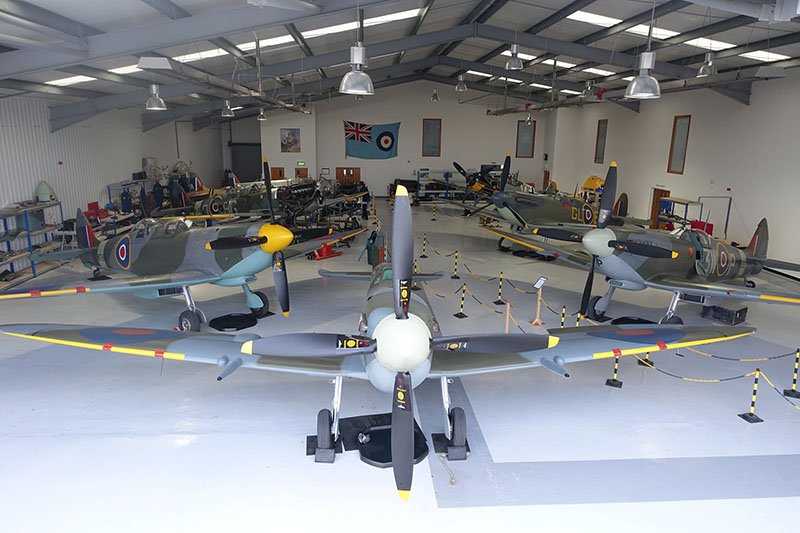
Biggin Hill Heritage Hangar today – where the world’s largest collection of Spitfires is on display
So, armed with a pilot’s name and a registration number, I was able to slowly reconstruct the story of Spitfire ML295. Below is an overview of the history and story of the Spitfire. I fully expect the story will continue to develop over the next few years as new information is uncovered.
Spitfire ML295
Spitfire ML295 rolled off the production line at the Castle Bromwich Spitfire factory, near Birmingham, in April 1944. The Spitfire was an LF Mark 9, which was designed for low altitude flight. At the time it was the cutting edge of Allied aircraft technology, powered by a 27 litre V12 Rolls Royce Merlin 66 engine, producing 1,705 horsepower and armed with 2 machine guns and 2 cannons in its wings.
This formidable combination made the Spitfire both fast and deadly and earned it a reputation, among both Allied and German pilots, as being the greatest fighter aircraft of the war.
It was allocated to 411 Squadron, who were part of the 2nd Tactical Air Force (2TAF). The 2TAF was set up with the objective of making offensive operations against the Germans and planning to help liberate occupied Europe. Together with 401 and 412 Squadrons, 411 Squadron formed the 126 Wing of the Royal Canadian Air Force, who, as I have mentioned in a previous Sortie, were the most successful group of Spitfire pilots during the war.
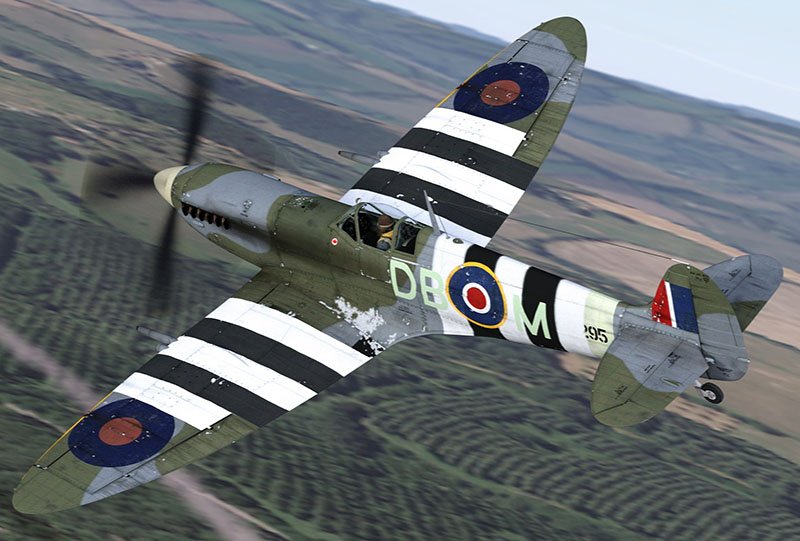
A reproduced image of what Spitfire ML295 would have looked like soon after D-Day
D-Day Spitfire Pilots
The pilots that flew Spitfires during the Battle of Britain in 1940 and those that flew around D-Day in 1944, were markedly different. During the early stages of the war, the urgency of the situation meant that some pilots took to the skies in their Spitfire having only been quickly shown the basics of the controls.
In 1940, the Spitfire was also a relatively new aircraft, with the limits of its performance and capabilities still being tested. The Allied pilots who flew them encountered unfamiliar German aircraft and tactics, whereas the Luftwaffe pilots they faced were fully prepared for war. Despite these disadvantages, through force of will and strong leadership, the RAF prevailed.
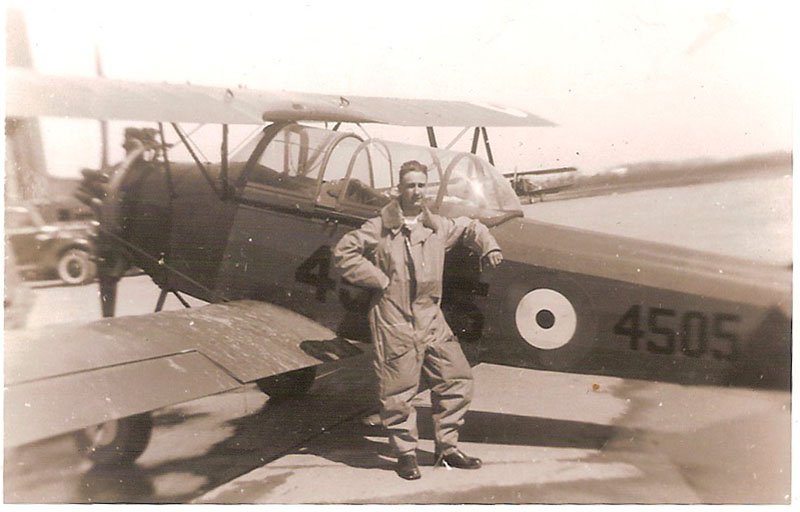
This is Hal Kramer in 1941 at the Elementary Flying Training School in London, Ontario. He is alongside a Fleet Finch, which was a locally produced biplane that pilots spent their first 50 hours of flying in
After the success of the Battle of Britain, Fighter-Command wanted to help remedy the pilot training situation and so in the intervening years, through the British Commonwealth Air Training Plan, volunteer pilots in Canada spent 2-3 years training to prepare them for front line operations against the Luftwaffe. Their instructors included pilots who had flown during the Battle of Britain and they were able to pass on their valuable learned experience.
This new cohort of pilots, graduating in 1943/44, knew their Spitfires inside out and flew them like an extension of their own bodies. They were also fully aware of all the types of German aircraft they would encounter, what each type was capable of, and which tactics to use to defeat them.
By D-Day, on 6th June 1944, most of the pilots of 411 Squadron had spent at least a year with each other, having built incredible comradery and teamwork.
These young men were not just professional pilots, but professional Spitfire pilots, specifically trained to face and neutralise the current German threat.
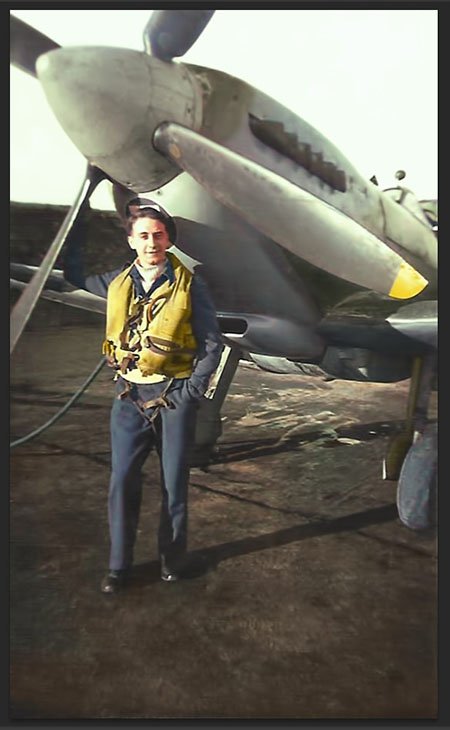
In 1943/44 at Biggin Hill Airfield, Hal Kramer poses with a Spitfire – possibly ML295
First Mission
The first mission flown by ML295 was on 2nd June 1944, by pilot Thomas “Tommy” Wheler. It was a Ramrod sortie, which was the code name for a bomber escort mission over occupied Europe.
The objective of these missions was to bomb and strafe targets and in doing so it was also hoped to lure out enemy fighters, which the Spitfires could then engage and destroy. This was part of the larger objective of preparations for D-Day, to both deceive the Germans as to where the landings would take place and to reduce the ability of the Luftwaffe to resist those invasions.

The original Operation Records Book showing Spitfire ML295’s first mission
The 411 Squadron operational records describe the mission, which took place near Amiens in Northern France: “Ramrod 960. Sweep of road and railroad between Amiens and Montdidier. One armoured car, 15 cart, truck and touring car was hit. Heavy flak was experienced in several places. A/C piloted by F/L R.W.Orr was hit and pilot baled out in English Channel”.
Flight Lieutenant Russell Orr was later rescued and returned to duty, with some of the photographs in this article being from his collection. Unfortunately, during the same sortie, Spitfire pilot John Hodgson from 403 Squadron was shot down and killed.
Spitfire ML295 Missions
After the success of the D-Day landings, forward airfield bases were set up in Normandy and on 19th June 1944, Spitfire ML295 moved with 411 Squadron from England to Beny-sur-Mer Airfield in France, designated Advanced Landing Ground B-4.
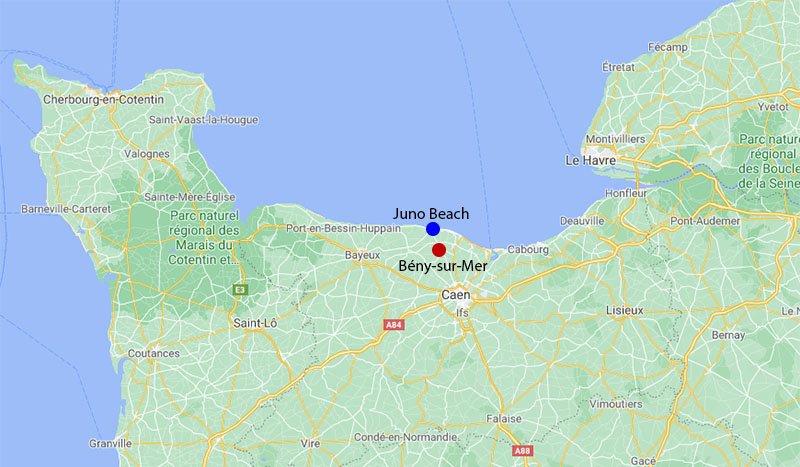
Bény-sur-Mer Airfield was located around 3 miles south of Juno Beach, and 8 miles north of Caen in the Normandy region of France. Juno Beach was where, just 13 days earlier, the main Canadian forces had landed during D-Day.
The airfield was so close to the front line that they remained well within German artillery range until Caen was finally liberated on 6th August 1944
From my research, we know that The Few’s Spitfire went on 67 sorties in total and the majority of these were flown from the Beny-sur-Mer base. These missions were flown over German occupied areas of Northern France. Here is a quick summary of the types and frequency of the missions it flew:
Patrol: 32 sorties
Armed Recon: 25 sorties
Sweep: 4 sorties
Dive-bombing: 3 sorties
Bomber Escort: 2 sorties
Scramble: 1 sortie
Details about these types of mission were described in the last Sortie.
Final Mission
On 30th July 1944 at 9.25am, Spitfire ML295 took off on an armed reconnaissance sortie over Northern France to attack a German convoy. It was flown by Pilot Officer Harold “Hal” Kramer, who was already on his second mission of the day in ML295.
At 10.30am, after having successfully attacked the convoy of German trucks, Kramer radioed to his wing-men to say that his engine had packed up, likely due to being hit by anti-aircraft fire.
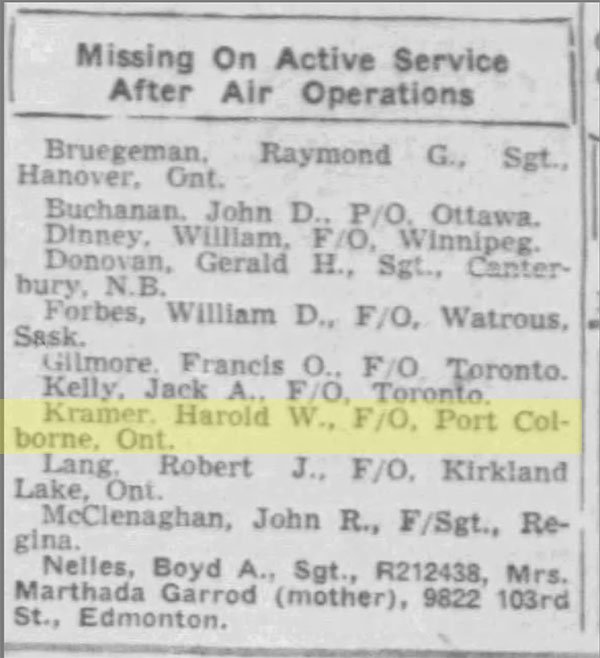
A local Canadian paper reporting Hal missing
The other pilots watched as Kramer’s Spitfire fell out of formation and out of sight. He was reported as missing in action and his family was given the grave news.
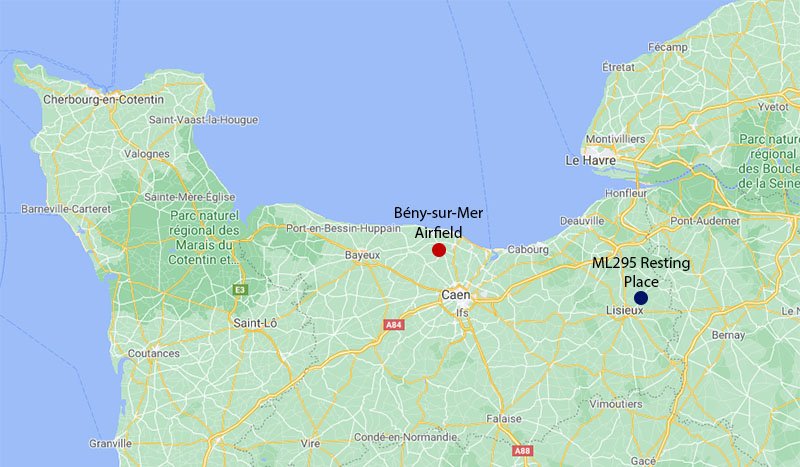
The site where ML295 crash landed on 30th July 1944, around 40 miles from the Bény-sur-Mer Airfield
Escape
However, 8 weeks later, Hal Kramer walked into the 411 Squadron base. He had managed to evade capture and make it back to Allied lines and was able to recount the incredible story of his escape.
After his Spitfire had been hit, flying at only 400ft, Kramer had just seconds to find a suitable area to land. Spotting a clearing, he skilfully glided his Spitfire to touch down in a marshy field.
Despite a rough landing, Kramer emerged from the cockpit unharmed. However, he was now deep inside enemy held territory and so he quickly made his escape.
Hiding in tall grass, a German patrol sent to investigate the crash passed within just a few of metres of him. However, Kramer’s heart sunk as one of the soldiers spotted him. The German soldier locked his eyes onto Kramer’s, holding the gaze for a few moments that felt like an eternity. Then, for reasons we will never know, the German soldier turned away, pretended to ignore Kramer and instead continued to chat with the rest of his patrol.
Kramer held his position in the grass, waiting for both his heart to stop racing and the patrol to move further away. Having somehow remained undetected, he crawled through fields and woods until he made his way to a farm, where, exhausted, he met with the local French resistance.
From here, a local priest hid Kramer in the boot of his car and drove him to a remote village. He was greeted by a French family, who were able to keep him hidden, until eventually the Allies pushed the Germans out of the area and the village – along with Hal – was liberated.
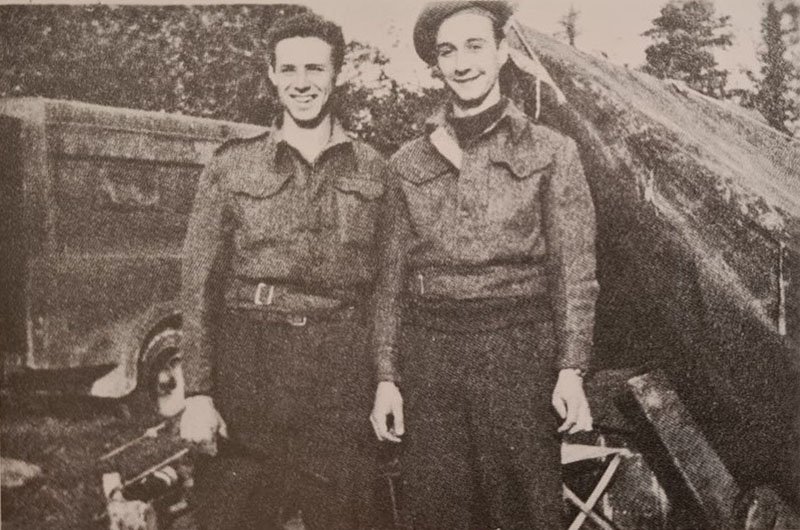
Upon his safe return to his Squadron on 28th August 1944, Hal Kramer (right) met up with another pilot Thomas “Tommy” Wheler (left), who had also just returned from evading capture. Tommy had flown ML295 on its first mission, making their meeting a happy reunion of the first and last pilots to fly Spitfire ML295
Spitfire ML295 Pilots
After the war, Hal Kramer continued to remain in touch with the family in France that had kept him hidden, forever grateful for the kindness they had shown him.
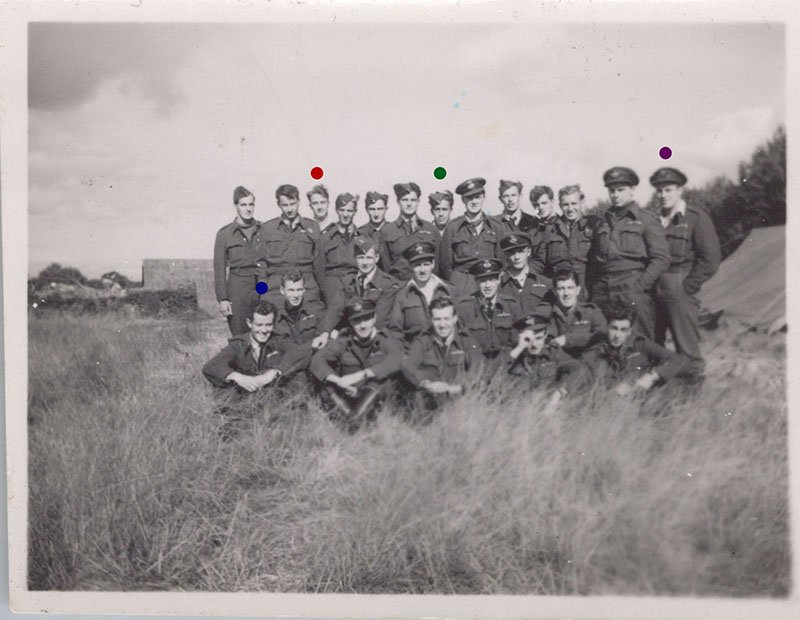
Some of the pilots of 411 Squadron, including four of ML295’s pilots.
Red: Hal Kramer, Green: Len Dunn, Purple: Doug Givens, Blue: Bob Hyndman
Kramer was just one of 11 incredible pilots that flew in ML295, of whom were 4 recipients of the Distinguished Flying Cross (DFC). The missions they embarked on in Spitfire ML295 included dogfights, train attacks, bomber escorts and dive bombing, which together contributed to the Allied success at D-Day and helped to liberate Europe.
Spitfire Restoration
77 years later, after having been recovered from France, Spitfire ML295 is being brought back to life, through a sympathetic restoration at the historic Biggin Hill airfield; where the aircraft originally began its journey in 1944.
As part of the restoration, the Spitfire is being converted into a two-seater variant. This will allow both enthusiasts and family members of the original pilots, to take to the skies in this iconic aircraft.
Once finished, the roar of the engine and the sleek lines of the wings will not only be a demonstration of Britain’s finest engineering prowess, but will serve as a visceral reminder of the bravery and skill of those 11 pilots and all that they sacrificed to give us the freedoms that we enjoy today.
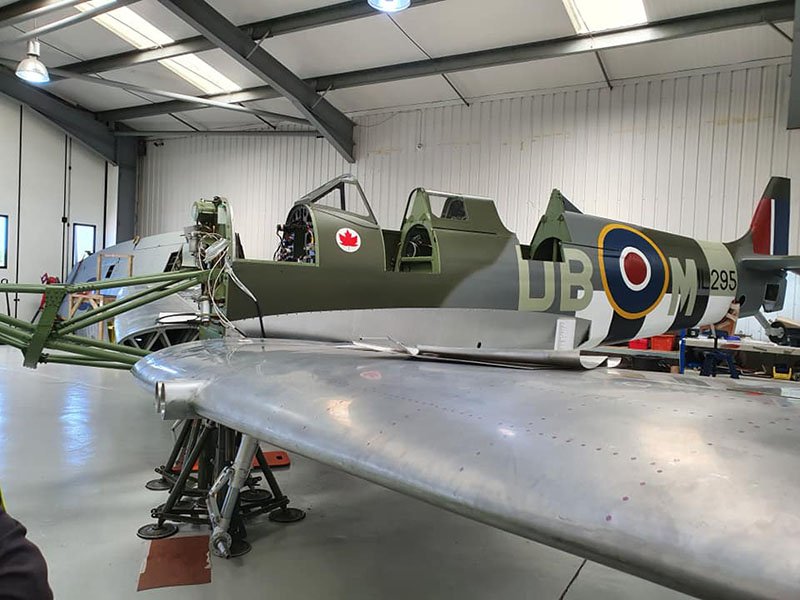
The progress of the restoration of Spitfire ML295 at the Biggin Hill Heritage Hangar, June 2021
Future Restorations
After the war ended, the absence of an enemy to fight meant there was suddenly a surplus of Spitfires. Jet-powered fighters were also starting to take over the air force’s front-line role and so the Spitfire often found itself more valuable as scrap metal than as a fighting aircraft. Thousands of Spitfires were either scrapped or destroyed.
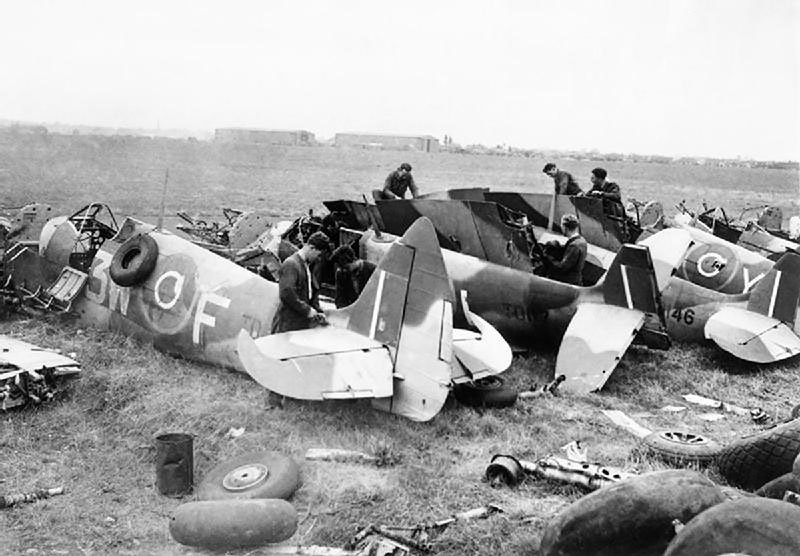
Spitfires being scrapped
Many of the Spitfires that have survived to today did so by virtue of being used as non-combat aircraft, either in a role such as a trainer aircraft, or by being part of an air force that remained neutral, such as the Irish Air Corps.
Biggin Hill estimate that worldwide there are perhaps as few as a dozen Spitfires left to be restored. This means that ML295 is a particularly rare example of one of the last Spitfires to be restored, and perhaps the best remaining instance of a Spitfire that has both an active combat record and no tragic ending to its story; as sadly not all pilots were as fortunate as Kramer.
That is it why is so incredibly important to help preserve the memory of this iconic aircraft and her pilots.
The Few – Watch Dial
When Spitfire ML295 made its unpowered crash-landing on 30th July 1944, the landing spot was a marshy field, described as a pond. Although a less than ideal landing spot for the pilot, the soft, wet ground, coupled with no easy route of access, protected the Spitfire from being salvaged and has meant that it has survived remarkably well.
The material used in the skin and frame of a Spitfire’s wings and fuselage is aluminium, which is both fantastically light and strong. However aluminium easily reacts with oxygen and over time it will degrade into a white powder called aluminium oxide. Clearly that is something any aircraft designer would want to avoid and so the Spitfire instead uses an aluminium alloy which resists oxidisation and clad this around an aluminium core. This allowed the Spitfire to be built from a material that was both light and strong, and that also resisted corrosion. This material is called ALCLAD and is still used today.
The success of ALCLAD is evidenced by the current condition of the aluminium frame and wings. Having spent much of its life in less-than-ideal conditions, it still retains its shape and strength, with perhaps only the light grey pattern on its surface giving a clue as to its age.
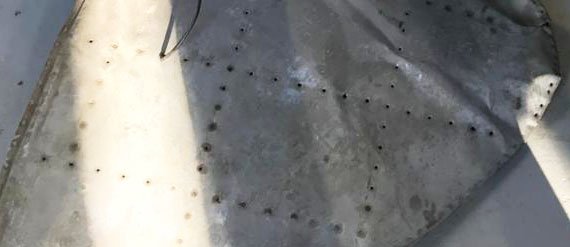
Some of the original material from Spitfire ML295
One of the benefits of using material from a Spitfire in making a watch’s dial, is that the metal is often already both flat and thin. This has meant that it can be used as a watch’s dial without the need to first flatten or compress it; which would also have distorted the natural patina on the surface.
I wanted to replicate the design of the original Spitfire pilot’s watch dial as closely as possible. The original watch’s dial was a copper disc which had paint applied to it mechanically using a pad. As it turned out, this technique was not appropriate for the Spitfire material, as although it is in good condition, it is still a metal that is almost 80 years old and has spent the majority of its life outside and exposed to the elements.
This meant that any paint added to the surface would either not adhere evenly on the dial or would degrade over time.
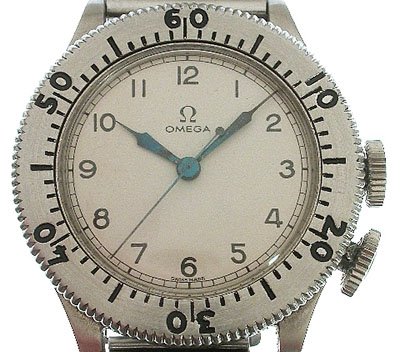
The original dial from a watch Spitfire pilots wore that The Few is based on
So, a new technique needed to be invented to give the dial numbers and markers that would last the lifetime of the watch – which would be expected to be at least 200 years.
After a lot of experimentation (don’t worry this was on replica material, not the original), the best results were found if a laser was used to etch an area on the surface.
Using the lasered area as a guide, I can then finish each of the dials by hand; by hand-engraving the markers and numbers and then filling that engraving with paint. The result gives a three-dimensional effect to the dial and brings it to life. The permanent nature of the engraving also serves to make the dial’s numbering resistant to damage from moisture.
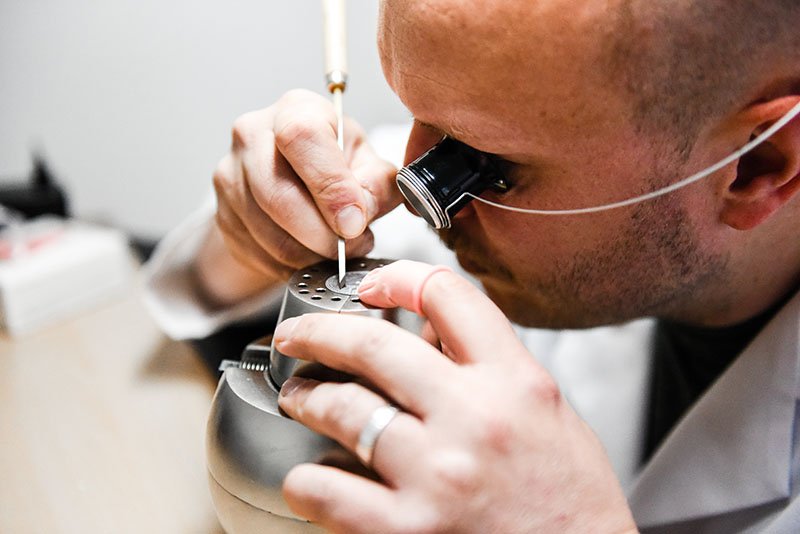
Engraving the dial by hand
Another problem I needed to overcome was how to fit the dial to the movement. Almost without exception, modern watches use dial feet, which are small posts that are soldered to the back of a dial. These then slot into holes in the watch’s movement.
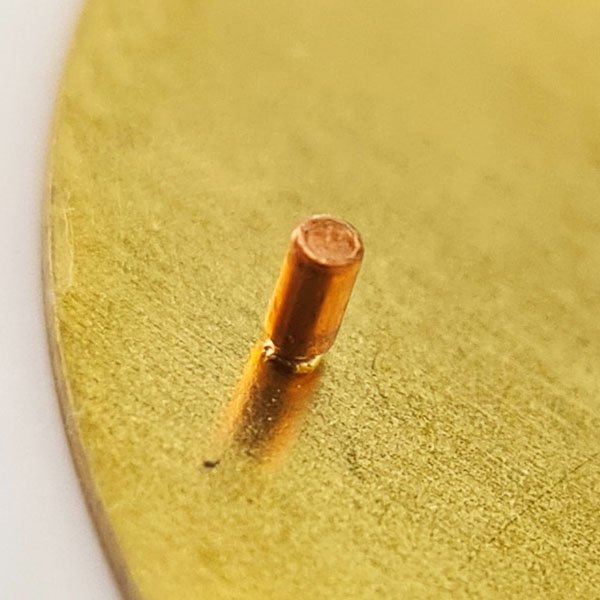
A dial foot on the back of a watch dial
However, dial feet are a weak point in any watch and it is very common for them to shear off if a watch is dropped or knocked. Fitting or refitting a dial foot requires heat to be applied to the area of the dial, which will destroy any paint and discolour the dial. This means a broken dial foot often means a dial needs to be replaced entirely.
As The Few watch is bespoke, I was able to design and craft the watch case and the dial together. This has allowed me to do away with fitting dial feet and instead make the dial of The Few fit into the watch case like a jigsaw piece. This has the added benefit of making it completely immune from any shock damage.
Through each of the watch’s dials, the unique patina and scars from the life of the Spitfire are preserved, serving as a visceral reminder of the history of the Spitfire and her pilots.
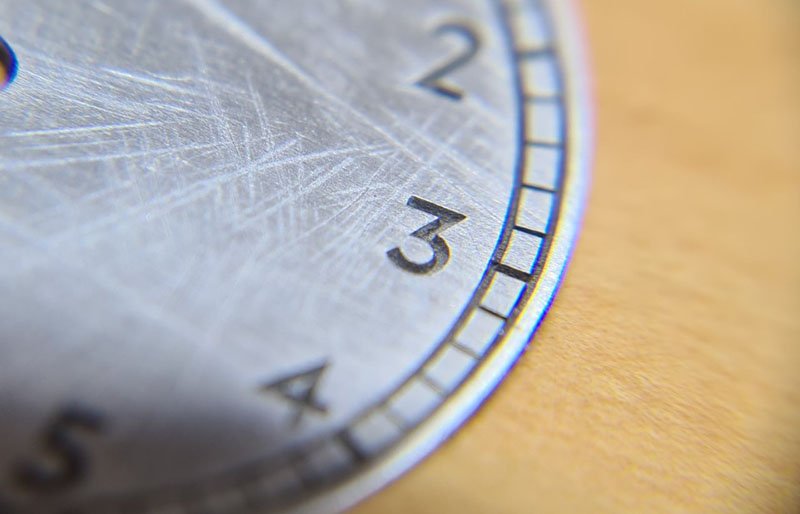
Closeup of a finished dial
Next Sortie
We will take a closer look at the pilots of ML295 and some of their incredible stories.
See you there.
https://www.great-british-watch.co.uk/sortie-14-the-spitfires-squadron/




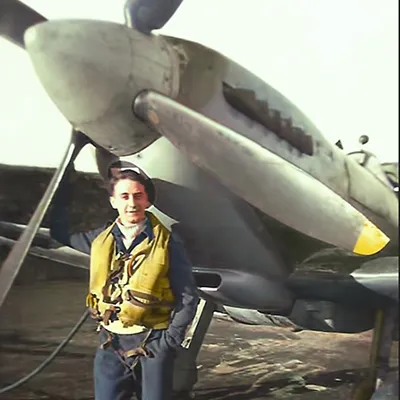

Dave Holroyd
5 August, 2022 at 10:28 pm
I was lucky enough to take the controls of this fabulous spitfire for ten minutes or so yesterday , an experience which will stay with me forever
Colin
25 August, 2022 at 9:54 am
Brilliant Dave, what an unforgettable experience that must have been
Sortie 15 – Tommy Wheler DFC – Great British Watch Company
12 August, 2022 at 6:01 pm
[…] have already heard about the first mission flown in ML295 previously, however Tommy adds his own notes on the sortie. During the Ramrod mission he noticed a car on the […]